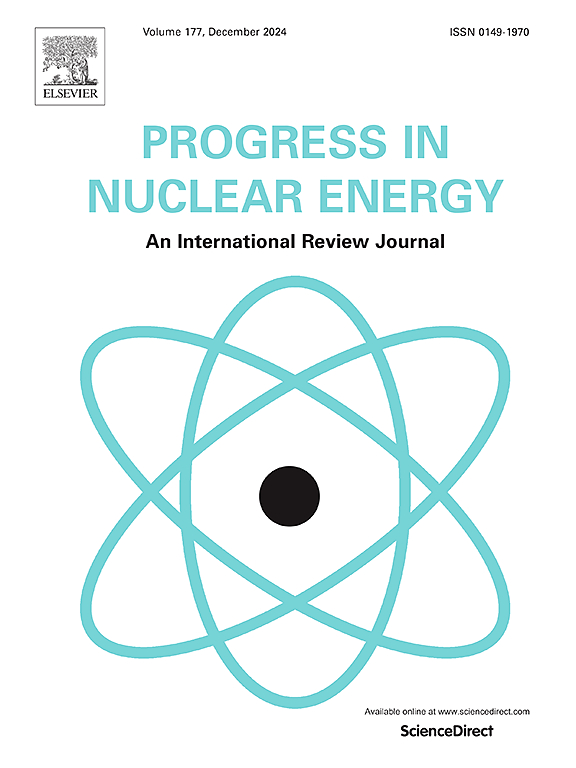Design and optimization of a 500 kW multi-cylinder double-acting free piston stirling engine for deep-sea nuclear power system
IF 3.3
3区 工程技术
Q1 NUCLEAR SCIENCE & TECHNOLOGY
引用次数: 0
Abstract
Given the increasing demand for deep-sea exploration, nuclear power system is attracting great interest for electricity supply due to its long-time operation with one refuelling. Double-acting free piston Stirling engine (DAFPSE) is a promising energy conversion system for nuclear power considering its long operation life, low vibration and little maintenance. However, the research on the DAFPSE design and optimization for deep-sea nuclear power system is scarce, which requires high volumetric power density. In this study, a practical isothermal model for designing multi-cylinder DAFPSE was established with the validation against the experiment. Also, the influences of structure parameters, operating parameters and heat exchanger parameters on the DAFPSE performance were investigated. The results indicated that the maximum deviation between the calculation and the experimental result was 8.75%. The compression ratio had significant influence on power density but less influence on efficiency. Specifically, the power density increased by 109.8% and the efficiency decreased by 11.7% respectively when the compression ratio changed from 1.5 to 2. As the engine frequency increased, power density first increased and then decreased, and the maximum power density of 10.71 MW‧m−3 was obtained at the frequency of 21 Hz. With the increase of regenerator porosity, the engine efficiency and power density had similar change trends, which showed that the maximum efficiency of 36.6% and the maximum power density of 10.35 MW‧m−3 were achieved at the regenerator porosity of 0.8 and 0.9, respectively. The engine efficiency and power density had linear variations with both the hot end temperature and the inlet temperature of cooling water. After the sensitivity investigation of the design parameters, multi-objective optimizations were performed for the structures with different cylinders. The four-cylinder DAFPSE obtained better overall engine performance, in which the optimal scheme was determined from the Pareto optimal frontier with output power of 500.64 kW, power density of 14.00 MW‧m−3 and efficiency of 38.02%.
求助全文
约1分钟内获得全文
求助全文
来源期刊

Progress in Nuclear Energy
工程技术-核科学技术
CiteScore
5.30
自引率
14.80%
发文量
331
审稿时长
3.5 months
期刊介绍:
Progress in Nuclear Energy is an international review journal covering all aspects of nuclear science and engineering. In keeping with the maturity of nuclear power, articles on safety, siting and environmental problems are encouraged, as are those associated with economics and fuel management. However, basic physics and engineering will remain an important aspect of the editorial policy. Articles published are either of a review nature or present new material in more depth. They are aimed at researchers and technically-oriented managers working in the nuclear energy field.
Please note the following:
1) PNE seeks high quality research papers which are medium to long in length. Short research papers should be submitted to the journal Annals in Nuclear Energy.
2) PNE reserves the right to reject papers which are based solely on routine application of computer codes used to produce reactor designs or explain existing reactor phenomena. Such papers, although worthy, are best left as laboratory reports whereas Progress in Nuclear Energy seeks papers of originality, which are archival in nature, in the fields of mathematical and experimental nuclear technology, including fission, fusion (blanket physics, radiation damage), safety, materials aspects, economics, etc.
3) Review papers, which may occasionally be invited, are particularly sought by the journal in these fields.
 求助内容:
求助内容: 应助结果提醒方式:
应助结果提醒方式:


